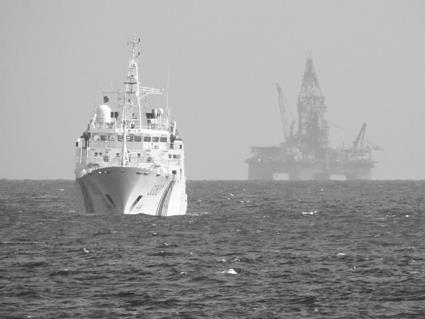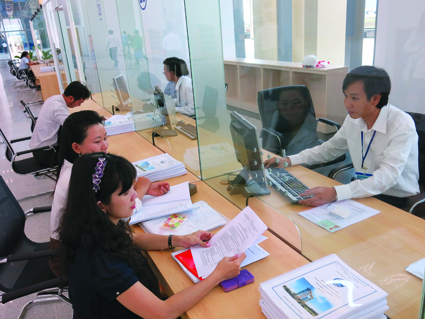Ass. Prof., Dr. Hoang Sy Dong
Development Strategy Institute - Ministry of Planning and Investment
Why economic restructuring and growth model renewal necessary and current challenges
Domestic situation: Vietnam holds an important political position in the region and boasts rich natural resources. Vietnamese people are very industrious and capable in many fields, but the country still relies on financial aid and its people are poor.
The structure of the national economy remains backward, with growth largely depending on quantitative increase and low productivity, untapped potential and advantages, causing severe challenges to growth and development, whereas the openness of the economy is big.
Low salaries, high taxes and interest rates and lack of transparency have seriously affected production and dampened the creativity of workers. Weak management of transfer pricing and tax evasion by FDI enterprises and huge trade deficit with China are also big problems.
Production and service development has not yet identified key national products for concentrated investment and renewal of the growth model in the global value chain. The main source of state revenue is exploitation and sale of natural resources, especially oil and gas and land. According to official statistics, in 2008 earnings from oil and gas and land were VND 88,000 billion and 38,202 billion, respectively, accounting for 21.3% and 9.2% of total budget revenues, which, however, required huge investments from the State.
Poor infrastructure facilities, from expressways, container ports, international airports to major urban centers and economic zones, have hindered economic growth and sustainable development. Great imbalances exist between graduates from universities and vocational schools. Intel was able to recruit only 40 out of 2,000 graduates from five largest technical universities in Vietnam.[1]
Comparison of economic effectiveness, investment and productivity: The effectiveness of Vietnam’s economic development is far lower than the Republic of Korea (ROK) in the same development period and even lower than the economies of Thailand and Malaysia.
The total factor productivity (TFP) contributed to GDP growth was about 38%[2] in the RoK while this figure was only around 14-16% during the 2000-2012 period in Vietnam[3]. At present, Vietnam’s IT industry’s output is 30 times lower than Thailand.
The added value of key national exports is low (around 20% for textiles, garments and footwear and under 10% for electronic products) and the earned value is 10% lower compared to products of similar types of competing countries. With numerous beautiful landscapes and a rich culture, the country still attracts small numbers of tourists.
International context: Globalization has become a trend with competition and trade protection intertwined and complicated. The prevailing characteristics are open markets and quick access to capital sources and science and technology to step up national industrialization and earn greater benefits.
 |
Pumping export petrol and oil into an oil tanker at Dung Quat Oil Refinery (Quang Ngai province) __Photo: Nguyen Dang Lam/VNA |
Major powers like the U.S., France and Japan, new emerging countries like Russia and China and developing countries such as Cuba are all concentrating on restructuring their economies and changing their growth models to address their own limitations.
Key national products join the global value chain and production networks on the basis of exploiting and promoting potential and advantages via technology renovation to gain high added value. This is a demonstration of high-level economic restructuring and growth model renewal.
Contents of and relationship between economic restructuring and growth model renewal
Restructuring the economy is to reasonably rearrange key sectors that are facing serious problems and concurrently renew the growth model by using resources in the most efficient and sustainable manner through reforming institutions, applying science and technology and raising productivity in order to exploit and promote potential and advantages, join the global value chain and production networks with a view to enhancing the national value.
Renewing the growth model is to move upward in the value chain, with higher science and technology content, output and quality.
Economic restructuring must be understood as a pre-requisite and foundation for growth model renewal, which, in turn, exerts impacts on and plays an especially important role in pushing up economic restructuring to a higher level - a dialectical relationship, aiming to develop the country in an efficient and sustainable manner and raising the people’s living standards on the basis of exploiting and promoting national potential and advantages.
Economic restructuring and growth model renewal are closely interrelated in a continuous process moving forward from large scale as the primary objective at the outset to quality as a decisive factor at higher levels. This is an objective imperative in Vietnam’s development, which require concentrated and deepened efforts and high political determination as the country is confronting big challenges at the moment.
Specific contents of economic restructuring and growth model renewal in the current circumstance of industrialization and international integration:
Firstly, economic restructuring and growth model renewal must start from renewing the way of thinking to have a correct perception of this logical and dialectical process in order to achieve effective performance and avoid dogmatic mistakes.
Secondly, economic restructuring and growth model renewal in Vietnam should focus on the following specific contents
- Restructuring investment, focusing on public investment, in association with renewing the growth model toward effectiveness and competitiveness, while raising the effectiveness of private and foreign direct investments in order to increase added value and competitiveness of key products;
- Restructuring labor, shifting from agricultural labor as a main workforce to industrial and service labor, from low-productivity labor to high-productivity labor, concentrating on key national products and public administration;
- Restructuring manufacturing industries as the centerpiece in the process of national industrialization, learning the lessons of industrialized countries around the world, except Singapore and Hong Kong which have developed from services.
- Restructuring finance and banking, focusing on developing strong, transparent and convenient banks, maintaining low exchange rates and development credit interest rates for key national products, strictly managing the foreign exchange market and capital flows in the economy;
- Restructuring enterprises, focusing on ineffective state enterprises while promoting private and FDI businesses as they are a driving force for the country’s economic development.
Proposed strategic solutions to restructuring the economy and renewing the growth model
Raising awareness, honesty, consensus and desire for implementation
To raise the awareness of the entire political system, especially governmental agencies at all levels, institutes, universities and, particularly, businesses through public information activities and holding workshops and training courses on restructuring key national products in association with the new growth model, effectiveness and competitiveness in the context of globalization in order to achieve consensus and desire for implementation.
Specifically, governmental agencies should ensure transparent administration and management; institutes and universities conduct specific research and development (R&D) activities; and businesses produce and trade in key agricultural and industrial products in order to restructure key national products in association with the new growth model, effectiveness and competitiveness in the global value chain and production networks.
Renewing institutions, including organizational apparatuses, laws and policies
To further renew organizational apparatuses, especially improving the systems of governmental agencies, research institutes and businesses that produce and trade in key products.
To renew general administration work along with raising the operation efficiency of institutes, universities and businesses that produce and trade in key products in the global value chain and production networks.
To strongly implement in a transparent manner the laws on investment, public investment, education and training, science and technology, natural resources, enterprises, taxes, etc., especially national policies on science and technology renewal and policies on technological barriers.
Promoting science and technology renewal with a focus on R&D activities
In order to restructure key products in association with the new growth model, effectiveness and competitiveness, it is necessary to promote science and technology renewal with a focus placed on the following R&D activities:
(i) Renewing the science and technology approach from acting as “intermediary” to carrying out specific activities to develop key products;
(ii) Conducting science and technology renewal to develop products based on tripartite cooperation among the State (providing support policies, e.g., low interest rates), institutes and universities (conducting research activities) and businesses;
(iii) Stepping up R&D activities in the whole value chain (upstream, midstream and downstream) and production networks, especially in leading businesses;
(iv) Establishing and operating R&D centers for key products based on tripartite cooperation according to the global value chain and production networks;
(v) Attaching importance to breeds, mechanization and global standards; supporting industries; marketing and distribution.
Developing human resources
After restructuring human resources, especially high-quality ones, to renew training activities after the international model, aiming at the following targets: skilled workers accounting for at least 75% of the workforce; university graduates and master degree holders: around 30% of the workforce, of whom those in the manufacturing sector will be equal or slightly higher than those in the service sector; and doctorate degree holders and chief executive officers: around 5% of the workforce, with priority given to overseas training in economics, business administration and high technology.
To provide key product-based intensive training, specifically: to train skilled workers in connection with factories, material zones and businesses producing and trading in key products with advanced technologies; to associate university and master training with research activities in laboratories, experimentation stations and businesses producing and trading in key products with advanced technologies; and to associate training of doctors and chief executive officers with practical knowledge and overseas training based on modern methods.
Organizing territory in clusters to exploit and promote potential and advantages
To apply a modern model of territorial organization in replacement of the existing model for exploiting and promoting potential and advantages and participating in the global value chain and production networks through:
- Conducting domestic and overseas researches to work out specific and rational plans of action for building clusters for key products.
- Devising plans on building clusters for key products on the basis of properly identifying leading businesses to exploit and promote potential and advantages for effective participation in the global value chain and production networks in the context of globalization, industrialization and international integration.
- Monitoring, evaluating and promptly modifying plans on building clusters for key products to keep pace with rapid developments in the country and around the world.
| Comparison of growth models | |
| Old growth model | New growth model |
| - Scattered investment, ineffective public investment; low-quality and -productivity labor in this sector; growth depending on capital expansion. | - Focused and effective investment, especially public investment; high productivity in this sector; growth stemming from science and technology renewal. |
| - Importance attached to agriculture and industry but not in tune with services; high bank interest rates; wasteful use of natural resources, substandard products, bad marketing services, etc. | - Importance attached to agriculture and industry, key products as well as services; low bank interest rates; efficient use of natural resources, standard products and good market services, etc. |
| - State enterprises regarded as the key but yielding low effectiveness, small private businesses with low scientific and technological and corporate governance levels; FDI enterprises mainly focusing on assembly and processing. | - Enterprises regarded as key, domestic enterprises strongly developed and FDI enterprises moving upward in the chain value, with high scientific and technological and corporate governance levels. |
| - Institutions not yet conforming to standards, still confusing; the State, or the Government in particular, making too many economic decisions, with inefficient, dishonest and non-transparent administration. | - Institutions conforming to general standards; the State, or the Government in particular, acting as creator of a fair environment, with efficient, honest and transparent administration. |









